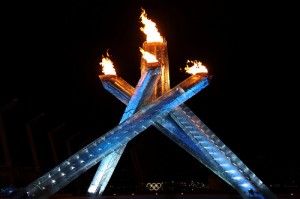The first time that I heard about Japanese presentation format, Pecha Kucha was two years ago when I spoke at the Experient E4 event. All of the E4 presenters were asked to participate in the fast-paced session that consists of 20 slides lasting 20 seconds each. At E4 we were asked to create a teaser about the session that we were presenting. I was talking about Twitter and told a story about how I explained what Twitter was to my Nana. I think it was well-received and the audience appreciated my attempt to mimic my grandmother’s New York accent.
As I mentioned in my previous post, last week I delivered another Pecha Kucha presentation. This time, the goal wasn’t to highlight an upcoming session, but it was to convey a complete message. My topic was Social Media for B2B Marketing. After my presentation, I didn’t feel that I said everything that I wanted to. As a way to extend the conversation, I wrote a blog post to support what my message was during my six minute and twenty seconds in the spotlight. While I wish I had done a better job during the live presentation, the idea of continuing the conversation through a blog post seemed to be a nice solution. Not only was I able to offer additional commentary on my topic, but it gave me the opportunity to keep the conversation going. Now, I should point out that I had the opportunity to discuss my presentation with the virtual audience who were tuned in to the session, but not everyone participated in that discussion.
Of course, post session blog posts don’t have to be limited to short-form sessions. What if all speakers were required to write a post that took their information to the next level. What if attendees worked on a collaborative document and created a white-paper based on the knowledge that they obtained during a conference session? What if instead of having a speaker, attendees had a group discussion and shared their thoughts on a Google Doc after the conference ended? What if that Google Doc was used to create webinars, articles and blog posts?
EventCamp Twin Cities had at least seven pods participating virtually. These pods were groups of people who gathered in their local regions to watch the main event virtually and were able to discuss topics locally. What if pod members created Pecha Kucha-style videos about their pod experience or in response to something that they learned. What if these videos were edited together to create a new session called “Podcha-Kucha” and it was made available to all attendees of Event Camp Twin Cities? What would that event look like?
What if the learning never ended? What would meetings and conferences look like? How would the role of the event planner change? How would the role of the attendee change?
This is happening today. Let’s start talking about it!
Photo courtesy of: Merelymel

